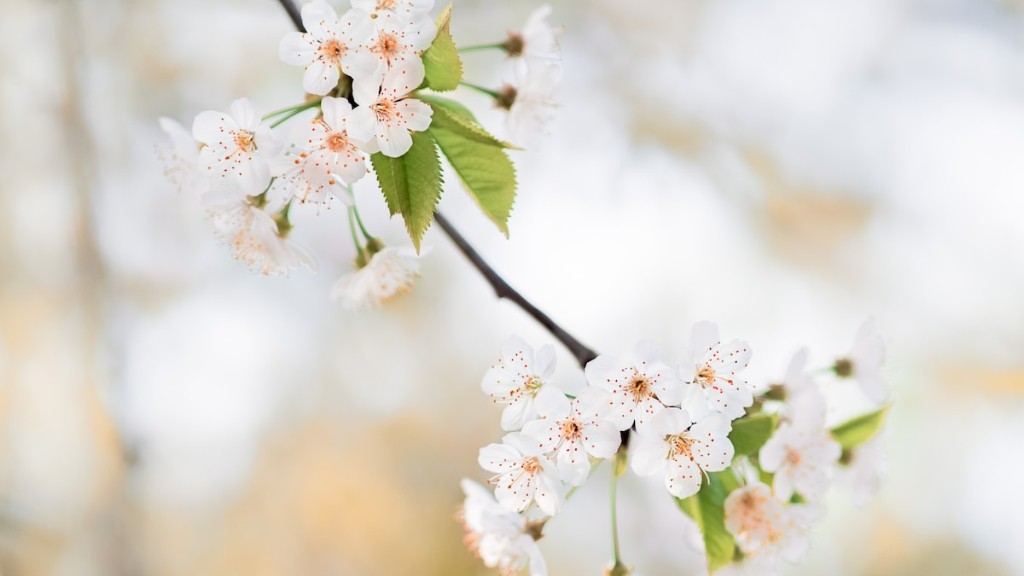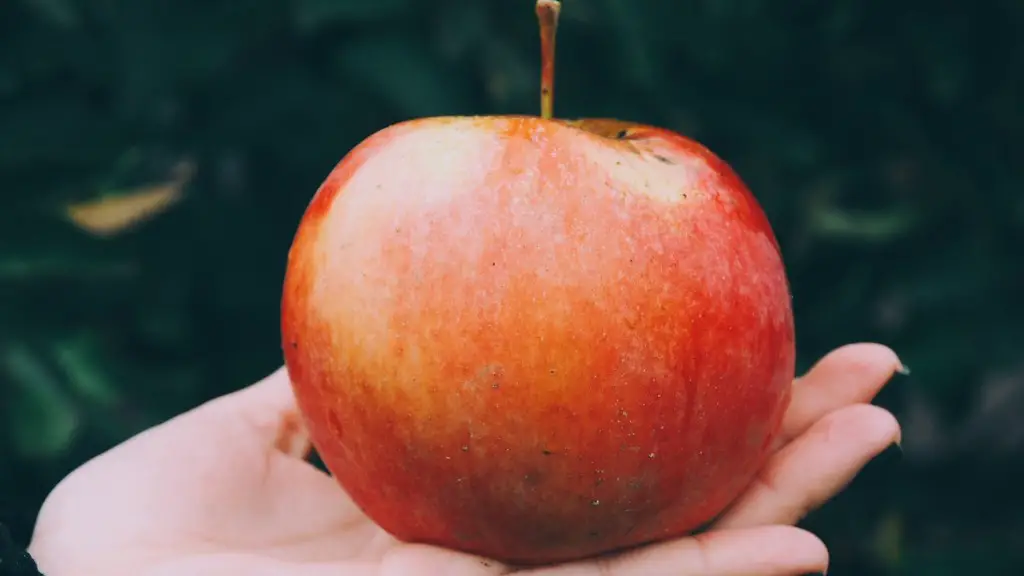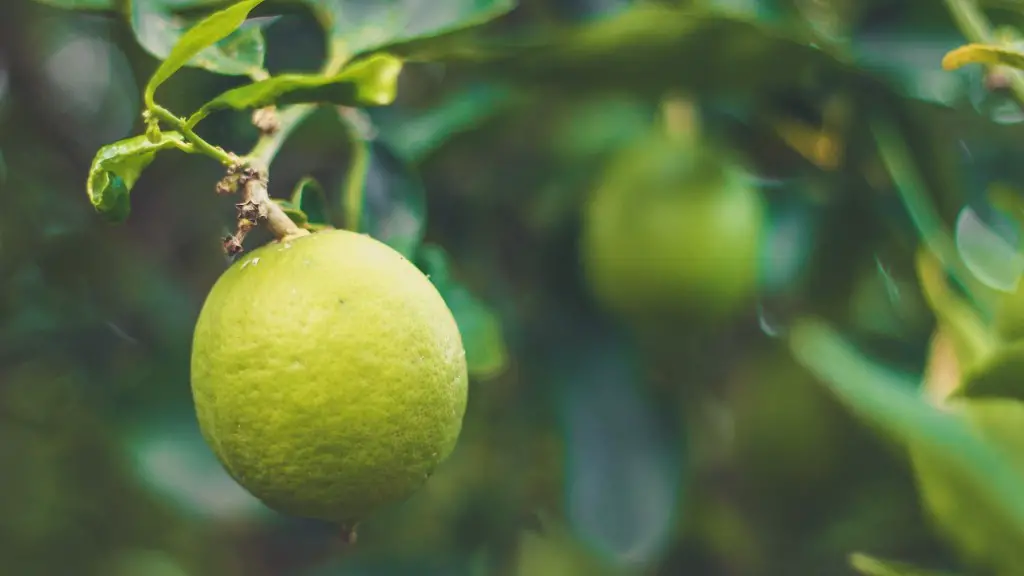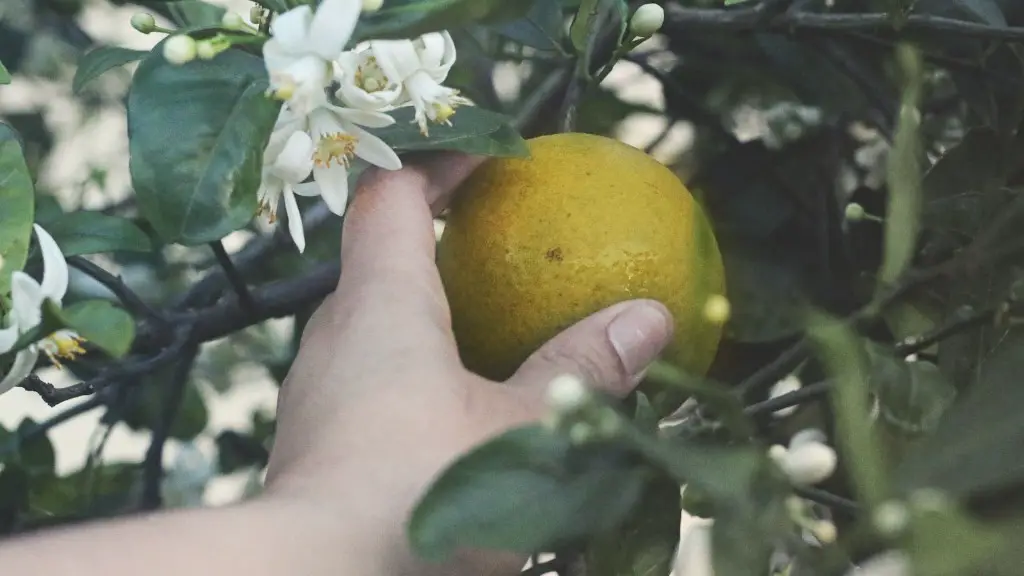Knowing the Basics of Kwanzan Cherry Tree Care
Kwanzan cherry trees are a beautiful addition to any garden or landscape. Native to Japan, these trees are known for their pink and white flowers that bloom abundantly each spring. While they are relatively easy to care for, there are some specific needs that must be met in order to ensure a healthy Kwanzan cherry tree. In this article, we’ll discuss the basics of Kwanzan cherry tree care.
The first step in caring for a Kwanzan cherry tree is to find the right place for it in your landscape. These trees prefer full sun to partial shade and thrive in nearly any soil, including sandy, loamy and even clay soils. Once your tree is planted in the ideal location, it’s important to give it plenty of water. An irrigation system can help ensure that your tree is receiving the optimal amount of moisture.
It is also essential to protect your Kwanzan cherry tree from extreme temperatures. These trees are generally not tolerant of temperatures below 0°F, so in areas with cold winters, it’s important to cover the tree or wrap it in burlap to protect it from damaging cold. In areas with hot summers, it’s important to provide extra water and protection from heat. Additionally, Kwanzan cherry trees should be pruned regularly to help ensure that they remain healthy.
Nutrients are also important for Kwanzan cherry trees. Mulching the tree is highly recommended as it helps keep the soil cool and moist and can help improve soil fertility. Manure or compost can be added to the soil to provide extra nutrients, such as nitrogen, potassium and phosphorus. If your tree is not thriving, it may be beneficial to have a soil test done to better understand the nutrient needs of your cherry tree.
Pest and disease management is also important for Kwanzan cherry trees. The most common pests are aphids, which can be managed using natural predators such as ladybugs and lacewings. Additionally, ants may be attracted to the tree, so it is important to be aware of this and take the appropriate steps to discourage the ants from remaining in your landscape. Disease management should be done before it’s a problem by using preventive measures such as good nutrient management and providing plenty of water.
Finally, it’s important to give your Kwanzan cherry tree the proper attention it needs during the blooming season. These trees usually bloom in the late spring and early summer, so it is important to be prepared to help them look their best. Providing adequate water, mulch and nutrients during the blooming season is essential to ensure the health and vibrant colors of the blooms.
Fertilizing Your Kwanzan Cherry Tree
Fertilizing your Kwanzan cherry tree is an essential part of caring for it and ensuring its health. Fertilizer helps to provide the tree with the essential nutrients it needs for healthy growth and blooms. It’s best to fertilize your Kwanzan cherry tree in the spring just before the blooming season. There are several types of fertilizers available, so it’s important to choose one that is specifically designed for trees. It’s also important to read and follow directions on the fertilizer package for the best results. Additionally, it is important to remember that too much fertilizer can be just as damaging as not enough.
Organic fertilizers are a great choice for Kwanzan cherry trees as they provide the necessary nutrition without the risk of chemical damage. Compost or manure are both excellent sources of organic nutrition. If you choose to use an inorganic fertilizer, be sure to choose one that is low in nitrogen. Too much nitrogen can lead to leaf burn and poor blooming, so it is important to be mindful of how much is being applied. Additionally, it’s important to water your tree well after fertilizing to ensure the nutrition is properly absorbed.
It’s also important to remember that fertilizer is not the only thing your Kwanzan cherry tree needs to stay healthy. Pruning, mulching and proper watering are also very important. Additionally, the best thing you can do for your tree is to monitor it regularly. By taking the time to inspect your tree frequently, you’ll be able to identify any potential problems before they become serious. From there, you can take the appropriate steps to ensure your tree remains healthy.
Insect and Disease Control
Keeping insects and diseases away from your Kwanzan cherry tree is a key part of caring for it. There are several methods of insect and disease control that are effective. These include the use of pesticides, biological controls and cultural control methods. Properly applying the appropriate control method is essential to protecting your tree from common issues such as aphids, scale and powdery mildew.
Pesticides can be a great tool for controlling insects and diseases, however it is important to make sure you are using the right type for the job. There are several types of pesticides available, so be sure to read the label and follow all directions carefully. Additionally, it’s important to remember that while pesticides can be effective, they can also be dangerous to people and animals. Take all necessary precautions when using pesticides.
Biological control is another method of controlling pests and diseases and is becoming increasingly popular. This is when other organisms, such as ladybugs, lacewings and parasitic wasps, are used to reduce the population of pests in your garden. This method is most effective when the organisms are properly released and monitored. Additionally, certain cultural control methods, such as crop rotation and sanitation, can help reduce the number of pests and diseases in your landscape.
It is also important to regularly inspect your Kwanzan cherry tree for signs of insect and disease damage. Common signs of distress include discolored or wilted leaves, dying branches and prematurely dropped blossoms. If you identify any of these signs, it is important to take action timely and appropriately. Proper identification of the issue as well as the appropriate use of insecticides, fungicides and other control methods are essential to keeping your tree healthy and beautiful.
Pruning Your Kwanzan Cherry Tree
Pruning your Kwanzan cherry tree is a key part of caring for it. Pruning helps to ensure that your tree remains healthy and beautiful and can also be used to shape your tree or remove damaged or diseased branches. Pruning is best done early in the spring, just before the blooming season. This gives you the opportunity to remove any dead or diseased branches or shape the tree as desired before the tree begins to bloom.
When pruning your Kwanzan cherry tree, it is important to use sharp and clean pruning shears. Additionally, be sure to remove any dead, diseased or damaged branches as they can provide an entry point for pests and diseases. It’s also important to prune selectively, removing only what is necessary to shape the tree and allowing the tree to retain its natural shape. If you are not sure how to prune your tree, it is best to consult with a professional.
It is also important to provide proper maintenance for your pruning tools. After each pruning session, be sure to sterilize your tools with rubbing alcohol or household bleach in order to prevent the spread of disease and pests. Additionally, it’s important to check your pruning tools regularly and replace them if needed to ensure they are cutting properly and providing the best care for your tree.
Watering Your Kwanzan Cherry Tree
Water is an essential part of caring for your Kwanzan cherry tree. These trees are relatively drought-tolerant once established, however it is important to provide adequate water for optimal health and blooms. It is best to water your tree periodically throughout the growing season, taking care not to overwater or under-water. An irrigation system can be a great way to help ensure your tree is receiving the optimal amount of water with minimal effort.
When watering your Kwanzan cherry tree, it’s important to remember that water should be applied to the root zone of the tree, not the leaves or flowers. Additionally, it’s important to water your tree deeply and slowly to ensure the water reaches the roots. Additionally, mulching your tree can help to keep the soil moist and cool, helping to ensure your tree receives the water it needs.
It is also important to check your soil before watering. If the soil is already moist, then it’s best to wait until it begins to dry before watering again. Additionally, it’s important to be mindful of weather patterns, as heavy rain and snow can provide your tree with more than enough water. Finally, it’s important to monitor your tree for signs of drought stress, such as wilted leaves, leaf drop or browning foliage.
Frost Protection
In areas with cold winters, it is important to provide proper frost protection for your Kwanzan cherry tree to ensure it remains healthy. During cold winter temperatures, the tree should be protected from frost damage by covering it with a frost blanket or wrapping it in burlap. This helps to retain radiant heat and insulate the tree against frost damage. Additionally, tree wrap or winter paint can be applied to the trunk of the tree to further protect against cold and frost damage.
It is also important to monitor your Kwanzan cherry tree closely during periods of cold weather. If you see any signs of distress, such as wilted or discolored leaves, it is important to take action quickly. In some cases, moving the tree to a warmer location or providing extra protection may be necessary. Additionally, it’s important to prune dead or damaged branches to help encourage healthy new growth in the spring.
Conclusion
Caring for a Kwanzan cherry tree is relatively easy, however there are certain needs that must be met in order to ensure a healthy and beautiful tree. Watering, fertilizing, pruning, insect and disease control and frost protection are all essential to helping the tree thrive. Additionally, it’s important to monitor your tree for any signs of distress and take the appropriate steps to ensure its health. With the right care, your Kwanzan cherry tree is sure to be a beautiful and lasting addition to your landscape.





